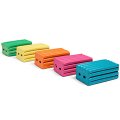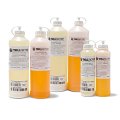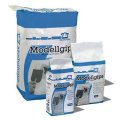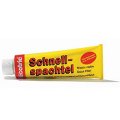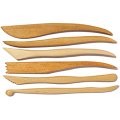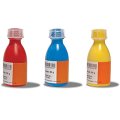Formetal
Information on Formetal
Formetal Varius (formerly called “Flexmetal”) is a basic and less expensive version of the three-dimensionally shapeable metal sheets. As an expanded metal it is stretchable. Conventional expanded metal sheets made from soft material can only be stretched in one direction and tend to display a parallel contraction in the other direction in the process. Formetal Varius, on the other hand, can be stretched in both directions without simultaneous lateral contraction (relative to each direction). This is made possible by the inclusion of predetermined breaking points which allow an elongation of up to 50%. If Formetal Varius has been expanded, it can be easily pushed back as far as you want and therefore be formed into all possible three-dimensional shapes.
Because of its somewhat rough looking appearance, Formetal Varius is primarily used as a foundation for plaster materials, fibre glass reinforced plastics or basic papier-mâché. It is used in making figures, moulds or prototypes and, not least, in model making as in, for example, landscape models. In short, it is always used when the easiest method for making three-dimensional shapes is sought. In such cases, the Formetal Varius is much more impressive than polysterene foam because the final result is finished more quickly and is more precise in detail as well.
Formetal Varius comes rolled up when delivered and is always cut along the width making that end very sharp, which means that care should be taken against cutting your fingers when unpacking it. Formetal Varius that is kinked or has lost its flatness can easily be put right again by means of a roller (a bottle, rolling pin, etc.). Because of its sharp edges, children should not be allowed to play with Formetal Varius and adults should use protective gloves.
Treatment: When working with Formetal Varius you will need a bottle or something similar for flattening out areas of the material, a scissors that can cut metal and a parrot nose pliers (nipper and pincer group). A pair of working gloves is also necessary because the sharp edges can easily cut your hands.
When pulling on Formetal Varius, it is impossible to miss hearing the cracking noise produced by the breaking of the predetermined breaking points. These make it possible to elongate it without it contracting in the other direction. If, however, the opposite axis does indeed contract a bit it can be easily pulled back to its original length. For making three-dimensional shapes, the approximate amount of volume necessary can be attained by simply expanding the sheet through pulling. At that point you can start to give the sheet a more detailed form by pressing the mesh back together at the required places. Small folds can only be avoided by doing the work with great care but, when necessary, they can normally be covered over by the material used as the covering on the expanded metal or hammered flat with a plastic hammer.
For attaching Formetal Varius to itself, wire, hot glue, mounting glue or two component glue can be used but you can also opt for pop rivets.
As a covering material for figures made with Formetal Varius we recommend plaster and casting powder. It is only when used in combination with these types of material that Formetal Varius really displays its many advantages as a foundation material: it is easily shaped and excellent for copying already existing glyphs. The laminating or covering material only pushes through the mesh to the extent that an excellent bond with a very hard and impact resistant surface is attained, one that lends itself to being further worked on as required.

